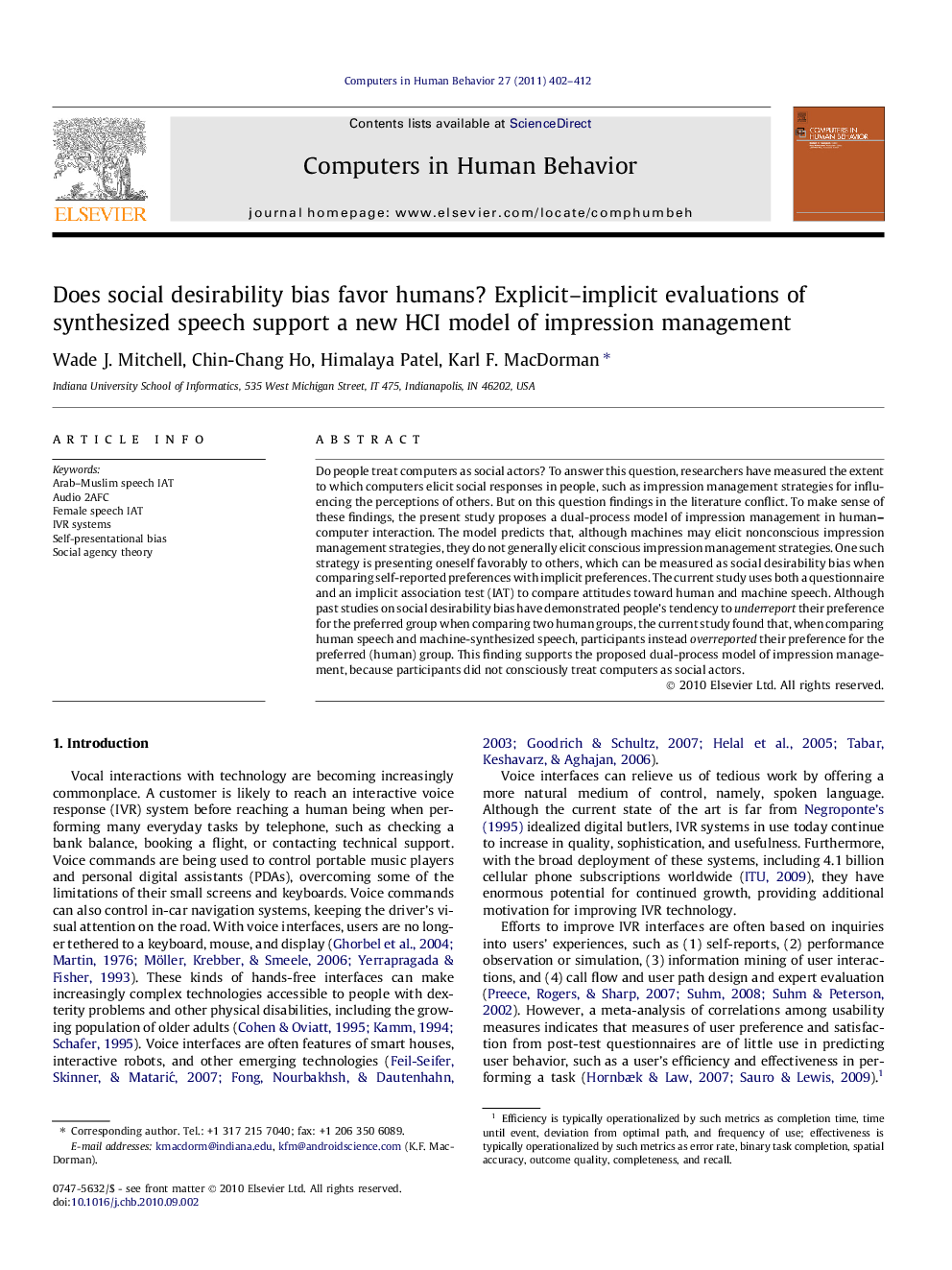| کد مقاله | کد نشریه | سال انتشار | مقاله انگلیسی | نسخه تمام متن |
|---|---|---|---|---|
| 351809 | 618478 | 2011 | 11 صفحه PDF | دانلود رایگان |

Do people treat computers as social actors? To answer this question, researchers have measured the extent to which computers elicit social responses in people, such as impression management strategies for influencing the perceptions of others. But on this question findings in the literature conflict. To make sense of these findings, the present study proposes a dual-process model of impression management in human–computer interaction. The model predicts that, although machines may elicit nonconscious impression management strategies, they do not generally elicit conscious impression management strategies. One such strategy is presenting oneself favorably to others, which can be measured as social desirability bias when comparing self-reported preferences with implicit preferences. The current study uses both a questionnaire and an implicit association test (IAT) to compare attitudes toward human and machine speech. Although past studies on social desirability bias have demonstrated people’s tendency to underreport their preference for the preferred group when comparing two human groups, the current study found that, when comparing human speech and machine-synthesized speech, participants instead overreported their preference for the preferred (human) group. This finding supports the proposed dual-process model of impression management, because participants did not consciously treat computers as social actors.
Journal: Computers in Human Behavior - Volume 27, Issue 1, January 2011, Pages 402–412